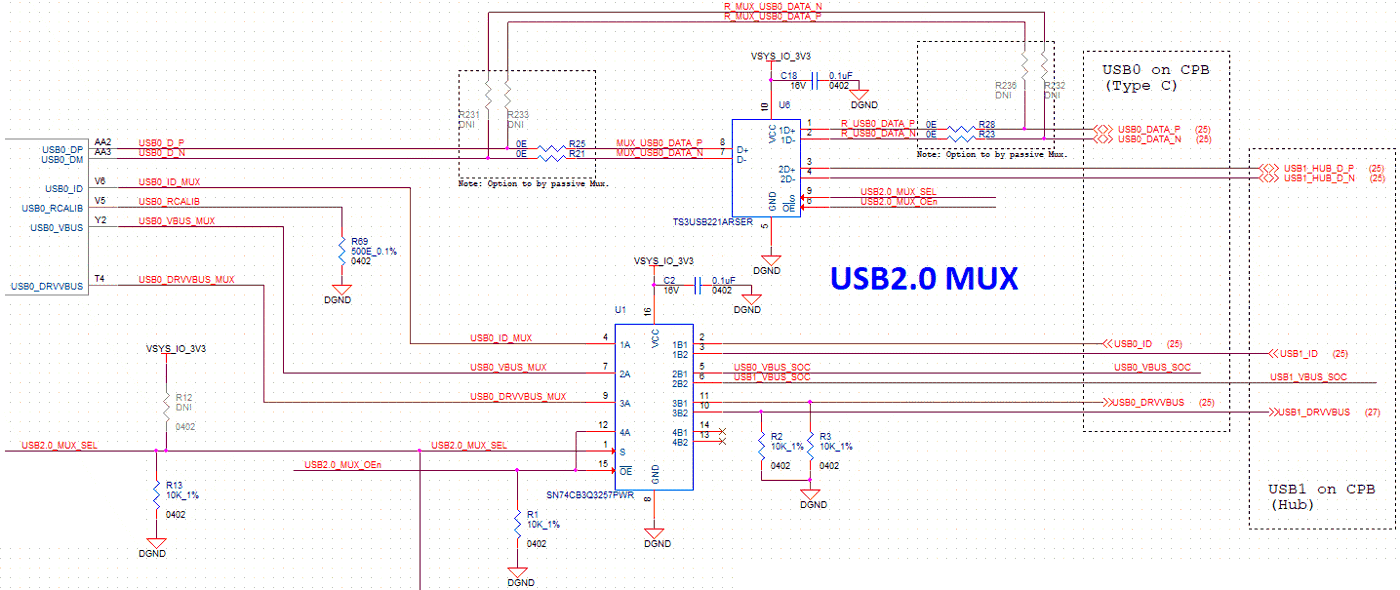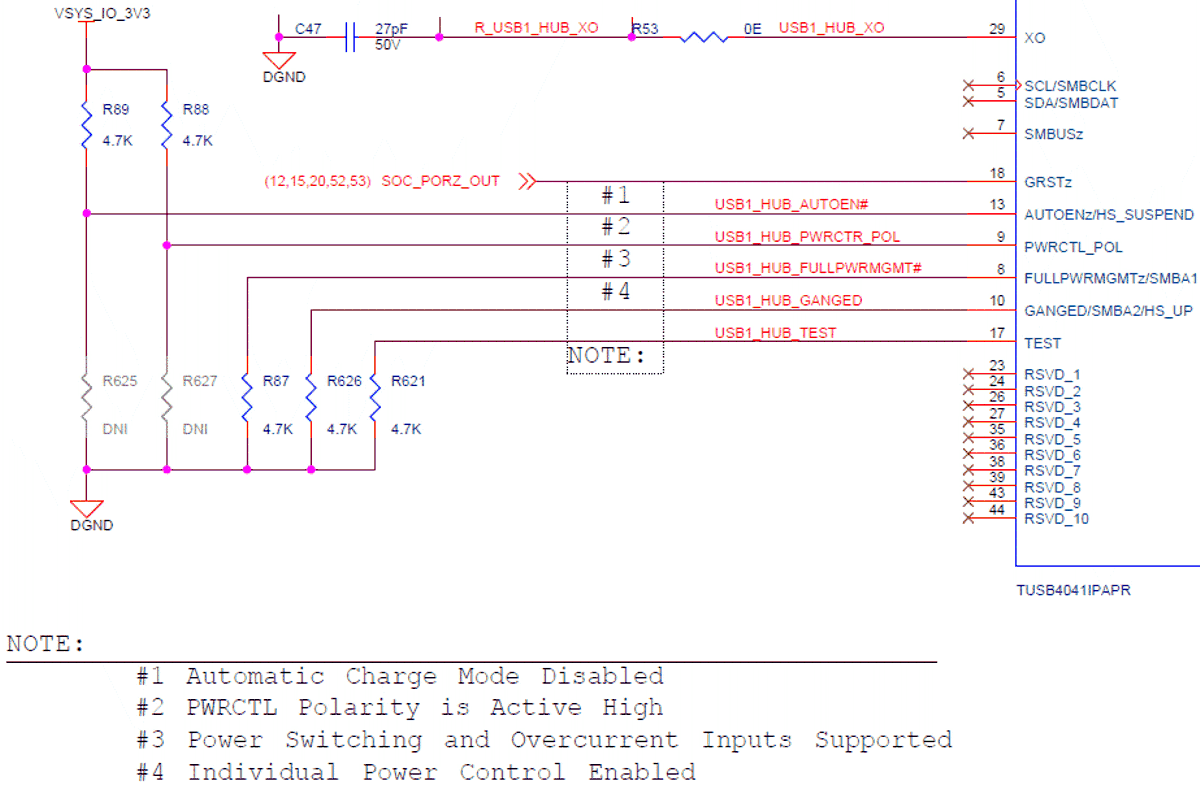SPRUIW7A October 2020 – February 2022
- Trademarks
- 1Introduction
- 2J7200 EVM Overview
- 3EVM User Setup/Configuration
-
4J7200 EVM Hardware Architecture
- 4.1 J7200 EVM Hardware Top Level Diagram
- 4.2 J7200 EVM Interface Mapping
- 4.3 I2C Address Mapping
- 4.4 GPIO Mapping
- 4.5 Power Supply
- 4.6 Reset
- 4.7 Clock
- 4.8 Memory Interfaces
- 4.9 MCU Ethernet Interface
- 4.10 QSGMII Ethernet Interface
- 4.11 PCIe Interface
- 4.12 USB Interface
- 4.13 Audio Interface
- 4.14 CAN Interface
- 4.15 FPD Interface (Audio Deserializer)
- 4.16 I3C Interface
- 4.17 ADC Interface
- 4.18 RTC Interface
- 4.19 Apple Authentication Header
- 4.20 JTAG Emulation
- 4.21 EVM Expansion Connectors
- 4.22 ENET Expansion Connector
- 5Functional Safety
- 6Revision History
4.12.2 USB 2.0 Interface
The USB0 port of J7200 SoC is used for USB 2.0 interface in J7200 EVM. The USB1 signals are connected to upstream port of USB 2.0 Hub (TUSB4041IPAPR). The four downstream ports from USB.
Hub are connected are shown below:
- Two USB ports are terminated to Type A Stacked Connector (AU-Y1008-2)
- One USB port is connected to 4 Pin Header (PCIe Card - Wi-Fi®/BT)
- One USB port is connected to EVM Expansion connector
The USB0 2.0 signals from J7200 SoC uses 1:2 mux ICs TS3USB221ARSER (for data signals) and SN74CB3Q3257PWR (for control signals) to support both USB0 Type C and USB 2.0 Hub.
 Figure 4-25 USB2.0 MUX Circuit
Figure 4-25 USB2.0 MUX CircuitThe reference clock to the USB HUB is provided using 24 MHz crystal and also an optional clock input from the Peripheral clock generator using a resistor mux. The default clock source is set to crystal.
 Figure 4-26 USB Hub Reference Clock
Circuit
Figure 4-26 USB Hub Reference Clock
CircuitThe USB HUB strapping options are provided in Figure 4-27.
 Figure 4-27 USB Hub Settings Circuit
Figure 4-27 USB Hub Settings CircuitAnd, the USB ID pin is pulled low to operate the J7 SoC in Host mode.
 Figure 4-28 USB1 ID Setting for HUB
Figure 4-28 USB1 ID Setting for HUB